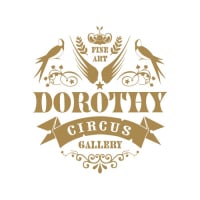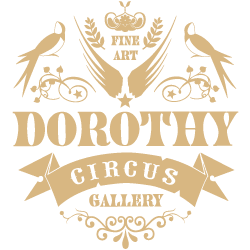
LAVINIA FONTANA BREAKS THE MARKET WITH A NEW PORTRAIT OF ANTONIETTA GONSALVUS

The work had been estimated at between EUR 80 and 120,000, but the price rose in a very short space of time, and was then sold for an exorbitant sum. The work was therefore sold to its new owner at a price of over EUR 1.5 million, including auction fees.
The painting by Lavinia Fontana, dated around 1595, was virtually unknown, but we now know that it is far better than the one currently on display at the Blois Castle Museum.
We cannot but be delighted with the result of such a unique work, and all the more so since it is the work of a female artist, one of the very few women who painted in that century.
Lavinia Fontana in fact has a very special story. You may not know it, but this artist was the most important painter of the 16th century and one of the most famous portrait painters of her time.
But that's not all!
In fact, she had a truly incredible life in which she even managed to combine her career as an artist with her role as a woman and mother.
We are faced with a subject that may intrigue many, for different reasons.
The protagonist of the canvas is Antoinette, nicknamed Tognina, a little girl who had inherited hypertrichosis (a condition that increases the amount of hair on the body) from her father Pietro, who grew up at the court of Henry II of France. After the death of Catherine de Medici, the Gonsalvus family had lost their former protectors and found themselves forced to wander around Italy, eventually entering the orbit of Ranuccio Farnese, Duke of Parma. Tognina was offered to Isabella Pallavicina, Marquise of Soragna.
Her family's is the oldest described case of hypertrichosis in Europe, and it seems that her father's marriage to Catherine Raffelin inspired the fairy tale Beauty and the Beast.
Very little is known about Tognina's life, so that even her dates of birth and death are unclear, but her face has been depicted in a good number of paintings and prints.

But why depict this child with such a different appearance?
Many people do not know that around the 17th century interest in special sciences and the study of animal and plant monstrosities intensified. This was concomitant with a path followed by some painters, who began to paint bizarre creations for the most important European courts.
Curious characters began to be depicted, such as dwarfs, men with several heads or with different physicalities.
Among these representations is the first 'Furry', Lavinia Fontana's painting of Tognina, a work that was part of Ferdinand II Gonzaga's collection of mirabilia.
The work is disconcertingly beautiful: the girl is depicted in elegant and elaborate robes, her hair adorned with flowers and a feather, and in her hand is a scroll.
Her figure, so different and so strong, has inspired many contemporary artists, including a much-loved Italian artist: Paolo Pedroni.
The artist, inspired by Fontana's work, reinterprets this subject in a personal and contemporary way, putting it at the centre of several of his works.

All My Friends, 2016
Oil on canvas, 50 x 70 cm
In the series of 18 works that made up 'Poison Toffee Apples', a solo exhibition of the artist held at the Dorothy Circus Gallery in Rome in 2016, the story of Furry, a little girl characterised by a peculiar face covered in hair, is told.
The character portrayed by Pedroni promotes a tension aimed at pursuing fantastic and bizarre effects, typical of both hyper-contemporary Pop Surrealism and Mannerism and Baroque painting, in turn inspired by extravagant exotic subjects capable of arousing awe and wonder in people.
Pedroni's Furry is depicted in a green dress with a high collar, just like the 16th century representation, but embellished with a red ribbon, to which we find a teddy bear tied. Her long hair is gathered up in a wide bow and her large red eyes peer out at us. His room of wonders is a snowy landscape that alludes to solitude.

Furry Girl by Paolo Pedroni
Oil on Canvas, 18 x 24 cm
Through the fairy-tale language developed by the artist in his works, the paintings trace Furry's life, describing her fragility as well as her emotional strength. From one work to the next, the protagonist overturns the audience's expectations by mastering the diversity of her body and showing how insecurity can be transformed into strength of character.
Through these works, not only the viewer, but also the artist undertakes an introspective journey in search of fears and weaknesses that are as typical of childhood as they are unique to each of us.
Pedroni holds Furry's hand and, step by step, penetrates her story to go through all her insecurities, tracing the lines of a fable about self-acceptance and acceptance of others, only to re-emerge as a new and stronger person.
MAYBE ALSO MARK RYDEN WAS INSPIRED BY THE STORY OF ANTONIETTA GONSALVUS?

Mark Ryden, God Yak, 2019
But not only Pedroni was inspired by the work of Lavinia Fontana. Two other great artists, Mark Ryden and Marion Peck have probably drawn on the famous portrait to create unique works that enrapture the eye and the heart.
Mark Ryden is famous for the Yak, often the protagonist of his magical works, but not only here, as in God Yak, do we find a reference to the 16th century Furry, but also and above all in Fur Girl, a work from 2010, in which a little girl, who reminds us of Antoinette, is seen and represented according to the artist's poetics, and is presented to us with large, penetrating eyes and a long, snowy hair.

Mark Ryden, Fur Girl, 2010
WE CAN ALSO RETRACE THE INSPIRATION BACK TO MARION PECK'S SERIES "MY FURRY LADIES"

Marion Peck, Sheep Lady and Mouse Lady, 2016
Marion Peck, on the other hand, in her series 'My Furry Lady', portrays animals with almost human-like features, inspired by works from the 19th century.
With these oil paintings, the artist deepens the profound connection between animals and humans, exploring the complexities of the unique relationship that exists between them.
The series underlines the artist's mission to promote awareness and respect for the world we live in and all its inhabitants. Each painting captures the unique personality and essence of its subject, creating a visual representation of the bond that exists between man and animal. From the gentle gaze of a sheep to the shy one of a mouse, each portrait in this series is a testament to the beauty and complexity of the animal kingdom.
The artist, Peck, skilfully blends classical techniques with a modern sensibility to create timeless works.
MANY OTHERS WERE ALSO INSPIRED...
Charles "Cheetah Chops" Nelson by Travis Louie, 2018
------------
DISCOVER MORE ABOUT FUR IN ART
The fascination that the figure of Antoinette Gonsalvus arouses and has aroused in the past refers us first and foremost to the malia associated with hair, hair and what it represented in the past.
Hair and hair clearly link us to mammals, to the idea of the animal, and that is why even in the past, to distinguish ourselves from them, hair was groomed and adorned.
Moreover, in the past, and particularly in the 19th century, hair was also, itself, an object of ornamentation. Jewellery was also made from it, and was given as a sign of love, and worn to bring one's beloved closer.
Here, then, we still find beautiful Victorian jewellery with locks of hair woven into it, which have spanned centuries and come down to us as an expression of an era.

The fascination exerted by hair is also found, for instance, in Baudelaire, in the second half of the 19th century and in particular in the poem 'Le Cheveleure', part of the collection 'The Flowers of Evil'.
"O fleecy hair, falling in curls to the shoulders!
O black locks! O perfume laden with nonchalance!
Ecstasy! To people the dark alcove tonight
With memories sleeping in that thick head of hair.
I would like to shake it in the air like a scarf!
Sweltering Africa and languorous Asia,
A whole far-away world, absent, almost defunct,
Dwells in your depths, aromatic forest!
While other spirits glide on the wings of music,
Mine, O my love! floats upon your perfume.
I shall go there, where trees and men, full of vigor,
Are plunged in a deep swoon by the heat of the land;
Heady tresses be the billows that carry me away!
Ebony sea, you hold a dazzling dream
Of rigging, of rowers, of pennons and of masts:
A clamorous harbor where my spirit can drink
In great draughts the perfume, the sound and the color;
Where the vessels gliding through the gold and the moire
Open wide their vast arms to embrace the glory
Of a clear sky shimmering with everlasting heat."

In this black sea where the other is imprisoned;
And my subtle spirit caressed by the rolling
Will find you once again, O fruitful indolence,
Endless lulling of sweet-scented leisure!
Blue-black hair, pavilion hung with shadows,
You give back to me the blue of the vast round sky;
In the downy edges of your curling tresses
I ardently get drunk with the mingled odors
Of oil of coconut, of musk and tar.
A long time! Forever! my hand in your thick mane
Will scatter sapphires, rubies and pearls,
So that you will never be deaf to my desire!
Aren't you the oasis of which I dream, the gourd
From which I drink deeply, the wine of memory?"

And so it is that hair, hair, this natural and wild element, which strongly links us to animals, inspires today, as then, works of art ranging from poetry to painting to jewellery. Works that leave their mark and make us reflect on how much something so human can continue to fascinate people through the centuries.


Portrait de l'Infante Marie-Thérèse, future reine de France (1638-1683)by Diego Vélasquez (Right)
Marisol Suarez, braided wig | image © Katrin Backes (Left)

and the Assumption of St Mary Magdalene by Tilman Riemenschneider (1490-1492)




